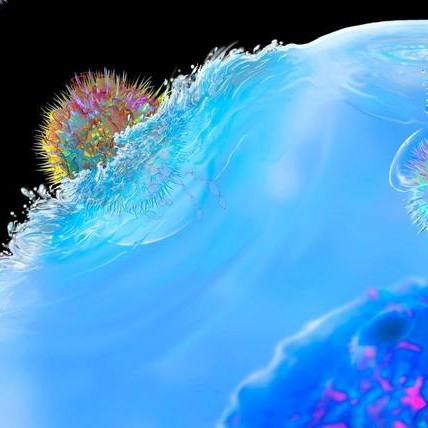-
Biotherapeutics
Science Saturday: Stem cell research to improve hemodialysis

Stem cell therapy after angioplasty helps keep arteriovenous fistula blood vessels open, Mayo Clinic discovered in animal studies. An arteriovenous fistula is a passageway between an artery and a vein. This research, supported in part by the Mayo Clinic Center for Regenerative Medicine, provides a foundation on which someday patients with end stage renal disease, who require hemodialysis and whose vessels narrow and eventually fail over time, could be helped. The Center for Regenerative Medicine is committed to turning promising laboratory discoveries into proven treatments and making them available to patients.
Angioplasty — a procedure in which a thin tube attached to a balloon is threaded through vessels — is the first line of treatment to clear blockage for dialysis patients with stenotic arteriovenous fistulas, but may only be a temporary solution. Research by Sanjay Misra, M.D., published in the Journal of American Society of Nephrology, finds that mesenchymal stem cells derived from adipose (fat) tissue could prolong the therapeutic effects of angioplasty.

“The best vascular access for hemodialysis patients is an arteriovenous fistula created by connecting the artery to the vein. Unfortunately, this type of fistula will eventually fail due to narrowing of the blood vessels that occurs over time,” says Dr. Misra. “Our peer-reviewed study shows that stem cells delivered to the outside of the vessel wall after angioplasty can help keep the vessel open longer.”
According to the National Kidney Foundation, approximately 2 million people worldwide with end stage renal disease undergo hemodialysis several times weekly to purify their blood. While there are a few different vascular options for dialysis to occur, arteriovenous fistula provides the best blood flow and also has less potential for life-threatening infections.
However, several studies have shown a recurrence of narrowing blood vessels in 40% of all hemodialysis patients one year after angioplasty.
“Currently there are more than 350,000 angioplasties per year are performed in the United States for hemodialysis arteriovenous fistulas” says Dr. Misra. “There are no durable therapies to prolong the opening of the vessels. Angioplasty plus stem cells may be a way to prevent stenosis, or narrowing of the vessels. In addition, this therapy could be used to address restenosis after arterial angioplasty.”
The research
Dr. Misra’s team compared two groups of mice with chronic kidney disease that had arteriovenous fistulas placed and had developed stenosis. Angioplasties performed on both groups expanded the narrowed vessels. Researchers injected some of the animals with adipose-derived stem cells and observed that group went a longer time without a recurrence of blockage than mice without stem cell therapy. Further, the team discovered that stem cells were still present as long as 28 days after injection, suggesting that the cells are providing benefit at this time point.
This study was funded in part by the National Institutes of Health. Prospective research in human clinical trials will be needed to verify the effectiveness and safety of combining adipose-derived mesenchymal stem cells with angioplasty to open blood vessels for dialysis patients with arteriovenous fistulas.
###







